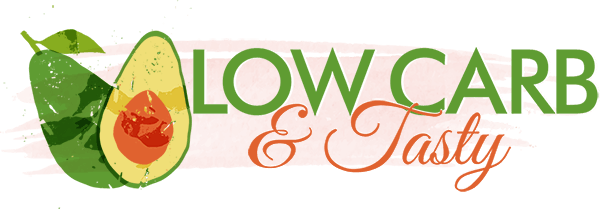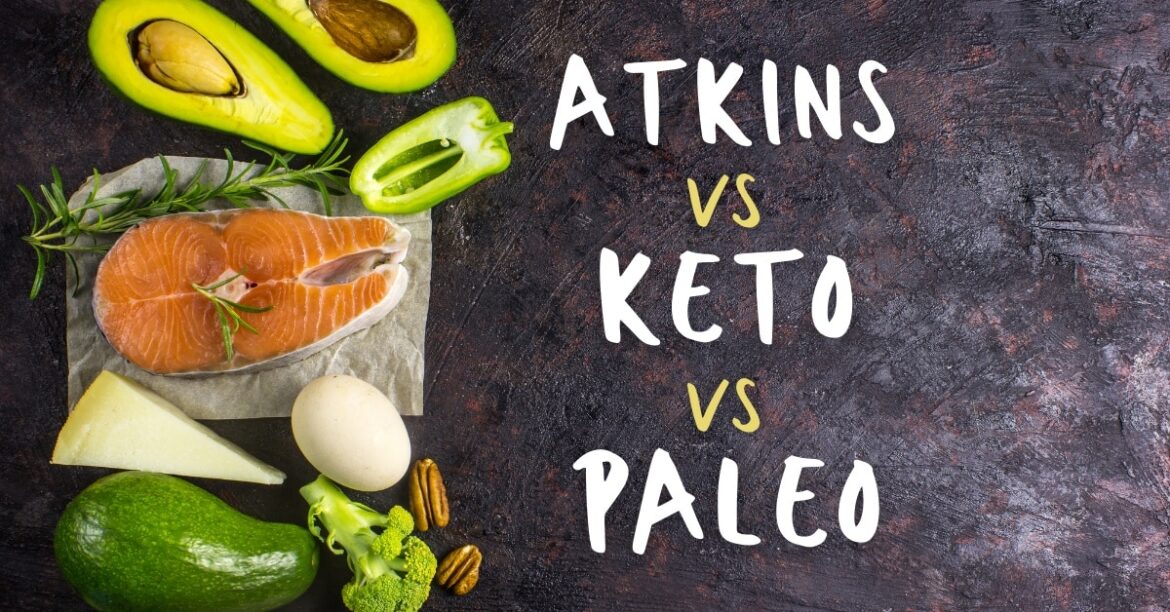Confused by the different types of low carb diets out there? Wondering which one might be right for you? In this article, we’ll compare Atkins, keto and paleo diets and uncover that while each has its own unique framework and nuances, they all aim to curtail carbohydrate consumption to promote healthier living.
- The Atkins diet introduces a four-phase process. It begins with strict carb limitation and gradually increases the carbohydrate allowance as individuals approach their weight goals.
- The keto diet emphasizes high fat intake to shift the body into a state of ketosis. In this state, the body burns fat for fuel instead of carbohydrates.
- The paleo diet encourages eating habits akin to our ancestors. The focus is on whole foods, while eliminating grains, dairy, and processed foods entirely.
Dive into the details of each diet below to figure out which one aligns with your health goals and lifestyle.
Atkins Diet: The Four-Phase Approach
The Atkins diet is a low carbohydrate diet that gained popularity in the early 2000’s due to its structured approach to weight loss and carb management. Unlike the keto diet, Atkins begins with a very low carbohydrate intake but then gradually reintroduces carbs back into the diet. This process is split into four distinct phases:
- Induction: This initial phase lasts for at least two weeks, during which dieters are advised to consume no more than 20 grams of net carbs per day, primarily from vegetables. The goal is to jumpstart weight loss by switching the body’s metabolism from burning carbs to burning fat.
- Balancing: As the body adapts, the second phase allows for a slight increase in carb intake. Nutrient-rich foods such as nuts, low carb vegetables, and small amounts of fruit are added into the diet.
- Fine-Tuning: When dieters get close to their target weight, they enter the fine-tuning phase. During this phase, they adjust carb intake as needed to slow down weight loss and find the perfect balance that can be maintained long-term.
- Maintenance: The final phase of the Atkins diet is all about establishing a permanent way of eating that maintains the new weight and health achievements. Carbohydrate levels are set at a level that allows the individual to maintain their weight.
Throughout the Atkins diet, the emphasis is placed not just on carb levels but also on choosing high-quality proteins and fats. This phased approach offers a level of flexibility that can be appealing for those looking for a structured diet that evolves with their weight loss journey.
Keto Diet: A Deep Dive into Ketosis
The ketogenic, or “keto” diet urges the body into a state of ketosis by severely restricting carb intake. It began in the early 1920’s as a treatment for children with epilepsy. Researchers discovered the keto diet offered the same therapeutic benefits as fasting without the danger to developing bodies. When seizure drugs were developed in the 1930’s, the diet was abandoned. The diet regained popularity in 2015, when modern research on the benefits of the ketogenic diet reached the media.
By drastically reducing carbohydrate intake, the body switches its fuel source from glucose to ketones. Ketones are molecules produced by the liver from stored fat. They are the preferred fuel source for certain parts of our bodies, including the brain. In fact, our ancestors relied on them during times of famine to enhance mental clarity and energy levels. The typical keto diet macronutrient ratio is roughly 70% fat, 25% protein, and 5% carbohydrates. This ration pushes metabolism into a state known as nutritional ketosis.
Ketosis doesn’t happen overnight — it can take days to achieve. It requires diligent monitoring of carbohydrate intake and testing may be necessary to ensure levels are met. However, the diet has proven to be effective for weight loss, improved blood sugar control and neurological health.
Paleo Diet: Eating Like Our Ancestors
The paleo diet (also know as the caveman diet) is a nutritional approach that seeks to emulate the diet of our Paleolithic hunter-gatherer ancestors. It gained popularity in 2002 with the publication of Dr Loren Cordain’s book, “The Paleo Diet.” The diet emphasis eating foods that would have been accessible to Homo sapiens thousands of years ago, while avoiding those that are the result of modern agriculture and processing. This means the menu is rich in meats, fish, nuts, leafy greens, regional veggies, and seeds, mirroring a hunter-gatherer lifestyle.
At its core, this diet revolves around the idea that for optimal health, we should eat real, whole foods that are more in tune with our genetics and biology than the standard Western diet allows. It is built on the notion that modern diets, with their reliance on processed foods and refined sugars, contribute to chronic diseases and health problems.
By adhering to the paleo diet, foods like grains, legumes, dairy products, refined sugar, and anything processed are excluded. Advocates argue this exclusion can lead to an array of health benefits, such as improved weight management and a decrease in the risk of certain chronic diseases.
Atkins, Keto and Paleo Comparisons
While the Atkins, keto and paleo diets each maintain unique rules and focuses, they share the goal of reducing carbohydrate intake in order to achieve better health and weight loss. The keto diet enforces a strict regimen of low carb/high-fat consumption to trigger ketosis, while the Atkins diet starts with a low carb phase and gradually increases carb intake over time. On the other hand, the paleo diet focuses not only on reducing carbohydrates but on eating what our ancestors might have consumed, emphasizing food quality and wholesomeness.
When comparing these diets, potential dieters should consider their lifestyle, food preferences, and nutritional needs. The keto diet demands careful monitoring of macronutrients to maintain ketosis. This could be challenging for those who prefer a more flexible or less restrictive approach. The Atkins diet, while it permits more carbs over time, requires dieters to work through the structured phases diligently. Finally, the paleo diet’s emphasis on unprocessed foods might necessitate a greater commitment to meal preparation. It may also mean higher food costs due to the focus on high-quality, organic foods.
Despite the popularity of these diets, what works for one individual may not suit another. Metabolic health, existing allergies or intolerances, and even the dieter’s relationship with food should be factored into the decision-making process. Long-term success from any diet depends on the ability to adhere to the dietary changes consistently over time.
Conclusion
The benefits of low carb diets such as Atkins, keto, and paleo can be life-changing. However, it is important to recognize that these diets need to become lifestyle changes to reap long-term benefits. Each body responds differently to dietary changes, and success requires personalized approaches. It’s essential to consult with healthcare professionals to determine the most suitable diet for your lifestyle and health objectives.
No matter which diet you choose, visit How to Get Started With Low Carb for some helpful tips!

